Spotlight Story
Rape survivors have a Hollywood friend
April 7, 2011
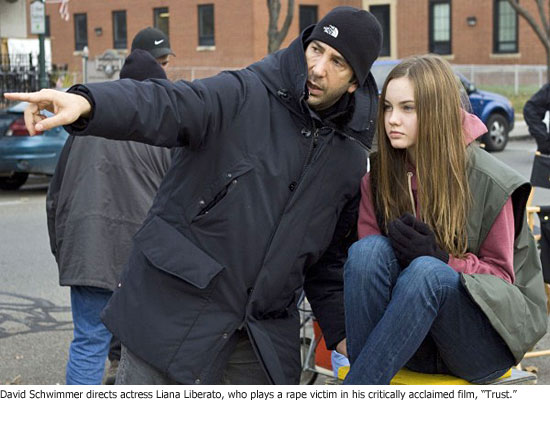 Fourteen years ago, as a star on the hit TV show “Friends,” David Schwimmer agreed to appear in one of NBC’s “The More You Know” public service announcements.
Fourteen years ago, as a star on the hit TV show “Friends,” David Schwimmer agreed to appear in one of NBC’s “The More You Know” public service announcements.
The request came from Gail Abarbanel, founder and director of the Rape Treatment Center at Santa Monica-UCLA Medical Center. And the more Schwimmer got to know about the center, he says, the more inspired he became.
“Two former relationships I had were with women who had been victims of child sexual assault,” he remembers, “and one had also been a victim of date rape. And it was also at a time when I was in that first flush of celebrity, and being approached by dozens of people who wanted me to loan my celebrity to their causes.”
Searching for a place where he could make a real difference, Schwimmer says, he found himself “just amazed by the work Gail and others at the center were doing.”
The PSA—on date-rape drugs—ended up being just a beginning. Last week, Schwimmer, now a director, released “Trust,” a family drama steeped in his work with the center and its funding arm, the Rape Foundation, where he has been a board member for the past decade.
“There are just countless things in the film that reflect the work and the goals of the Rape Treatment Center,” says Schwimmer, speaking by phone from New York, where he and his wife, photographer Zoe Buckman, are expecting their first child.
The movie—about a 14-year-old girl’s life-altering encounter in an online chat room—features acclaimed performances by Catherine Keener and Clive Owens, two of Hollywood’s most skilled actors. But in many ways, the Rape Treatment Center is a star, too.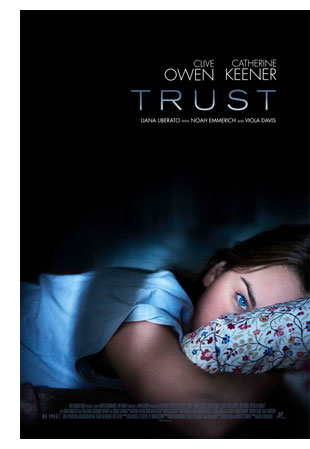
Located on Sixteenth Street in Santa Monica, the center for years has provided free state-of-the-art treatment, counseling and forensic services for sexual assault victims, as well as training for law enforcement and educational and prevention programs. It’s still the only facility in Los Angeles—and one of the few in the country—where sexual assault victims can receive services 24 hours a day, in one place.
Among its most innovative programs is Stuart House, a special facility for children that has become a national model for treating and interviewing child victims and coordinating services so kids don’t have to be re-traumatized by multiple interviews with police, prosecutors and child protection workers.
Schwimmer says the center’s work informed the script on many levels, from the dialogue to the portrayal of police procedure to the way a crime can impact every member of a family.
At one point, a character diminishes the impact of an acquaintance rape because the attacker didn’t use physical violence—a misconception commonly dealt with at the center. At another, an investigation is delayed by a massive backlog of untested “rape kits,” like the tens of thousands that had been warehoused in Los Angeles.
An FBI agent in the film is named for Doug Hunt, a real FBI agent who for years was a consultant to the center, says Schwimmer. And a therapist named “Gail” has a key role in the story.
“She and I have become really close,” Schwimmer says of the real Gail, who founded the Rape Treatment Center in 1974 and has shepherded it into a national model for rape treatment. “She works harder and longer and more passionately than any person I’ve ever met in any profession. She’s the most selfless person I’ve ever met. She really is an inspiration to me.”
The feeling is mutual, says Abarbanel. “I really feel like David took so much of what he’s been a part of for all these years, and incorporated it into this great film. I have gotten so much feedback from people on this movie. It really brings home so many issues parents deal with, so many questions about how to keep your kids safe.”
Although the performances have drawn raves, the early box office has been modest. “I knew it would be a challenge to get people into the theater,” says Schwimmer, “but it’s a great dramatic story.”
And an important one, he and Abarbanel add: One in six women has been a victim of rape or attempted rape. One in four girls, and one in eight boys, is sexually assaulted before they reach 18.
“My hope was not only that people would be moved and entertained, but that it would invite more discussion between parents and kids on a whole range of issues,” says Schwimmer, especially about the dangers of the Internet.
“It used to be that when some stranger came to your door, you could look out the peep hole and tell him to go away,” he says. “Now there are a hundred strangers knocking on your kids’ door every day. And you’re not always going to be there to intervene.”
Posted 4/6/11
An heiress with heart
April 7, 2011
There’s not a whiff of wealth around Aileen Getty. Her fingers are circled not with diamonds but with intricate tattoos. She wears bright yellow sneakers and sanely-priced jeans. Her face is free of makeup, warm and welcoming.
Aileen Getty’s grandfather was the billionaire oil baron J. Paul Getty. But these days she has found richness in her life on the far margins of society. A former heroin and cocaine addict who has been living with AIDS for more than two decades, she has emerged as arguably the most influential friend and benefactor of the homeless of Hollywood.
“I’ve been able to grow alongside them,” she says, “while they grow alongside me.”
During the past five years, Getty, 51, has quietly contributed millions of dollars to provide housing and food for Hollywood’s entrenched homeless population through her Gettlove organization and through gifts and loans to several other advocacy groups. By all accounts, she’s changed the landscape.
Getty says her own “inability to get well” has created in her a natural affinity with those struggling on the streets, most of whom are plagued by mental health and substance abuse problems.
“I’ve been an addict most of my life,” says Getty, who celebrated five years of sobriety on Valentine’s Day last month. “In my own journey, I really felt like I could either die or say, ‘Thank you and I’m sorry.’ I felt I had taken far more than I’d ever given. I didn’t want to go out that way…I rewrote my interior geography. That geography is now about others. ”
Gettlove, founded in 2005, has provided a variety of housing alternatives, depending on the needs of its clients. That includes refurbishing 30 rooms at two 1920s-era Hollywood hotels and lining up apartments for nearly two dozen homeless people in an aging Santa Monica Boulevard building. There, Gettlove staffers help tenants manage their finances and adjust to life with a roof.
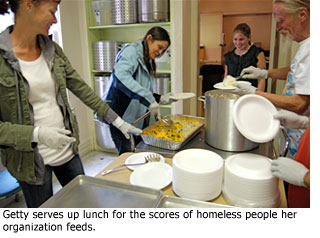 At the same time, Getty individually has funded other organizations—Step Up On Second, PATH and Housing Works—to help them develop permanent housing for residents who simultaneously receive such services as health and mental health care. This month, Getty’s efforts led to her being honored as “woman of the year” for Supervisor Zev Yaroslavsky’s Third District.
At the same time, Getty individually has funded other organizations—Step Up On Second, PATH and Housing Works—to help them develop permanent housing for residents who simultaneously receive such services as health and mental health care. This month, Getty’s efforts led to her being honored as “woman of the year” for Supervisor Zev Yaroslavsky’s Third District.
Underlying all of Getty’s financial and logistical contributions is her core belief in the power of one-on-one relationships to, in her words, “rekindle the part of a human being that wants to find its best self.”
“Just because we’re housed doesn’t mean our spirit is comfortable,” says Getty, whose organization has taken clients on outings to, among other places, the L.A. County fair and the horse track.
Beyond housing, Gettlove serves hundreds of breakfasts and lunches each week at a social services agency founded by Blessed Sacrament Church in Hollywood. Gettlove shares the Selma Avenue building with several other homeless advocacy organizations, a reflection of the growing coordination among non-profits, business owners and government agencies to reduce homelessness in Los Angeles’ most famous neighborhood. A 2009 count by the Los Angeles Homeless Services Authority found more than 1,000 individuals living on the streets of greater Hollywood, half of them young people.
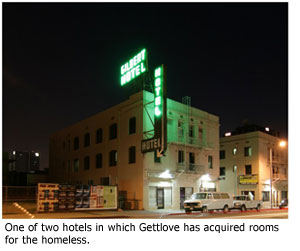 Getty can often be found at Blessed Sacrament’s social services facility spooning out food in the industrial-sized kitchen or mingling with clients in the dusty courtyard. Most have no clue about the family ties of the soft-spoken woman, who treats them as though they were her only family. But some have heard the buzz.
Getty can often be found at Blessed Sacrament’s social services facility spooning out food in the industrial-sized kitchen or mingling with clients in the dusty courtyard. Most have no clue about the family ties of the soft-spoken woman, who treats them as though they were her only family. But some have heard the buzz.
“I hear you’re one of the Gettys. Is that true?” they’ll ask. When Getty says yes, the matter quickly passes because her commitment to them has already become the defining characteristic of their relationship.
“The clients know me for what I do with them each day,” Getty says, “not what I give to them each day.”
That said, Getty also knows her wealth is central to Gettlove’s effectiveness, giving her an edge over traditional service groups that must be accountable to the agencies that fund them. “I’m not dependent on anyone else’s expectations,” she says.
This extraordinary financial freedom allows Gettlove to experiment, to learn what works and then collaborate with government agencies to bring to life these “best practices” models.
Says Getty’s longtime friend and fellow Gettlove board member, John Ladner: “We’re taking advantage of our inexperience. We have the advantage of not too many set-in-stone obstacles.”
Looking ahead, Getty believes that providing homes to the homeless should not be embraced as an end in itself. “Nothing is solved,” she says, “unless we nurture a sense of community.” To that end, she envisions the development of community centers, where the homeless and the newly housed can gather during the day and enjoy the restorative powers that come with companionship and “a true sense of belonging.”
Among other things, she says these centers would offer everything from movies to gardening. “Someplace where people get to laugh,” Getty says—something that, these days, comes much easier in her own life. Says Getty: “I’ve become a more comfortable human being.”
Posted 3/24/11
County gets rolling on a new bike plan
March 10, 2011
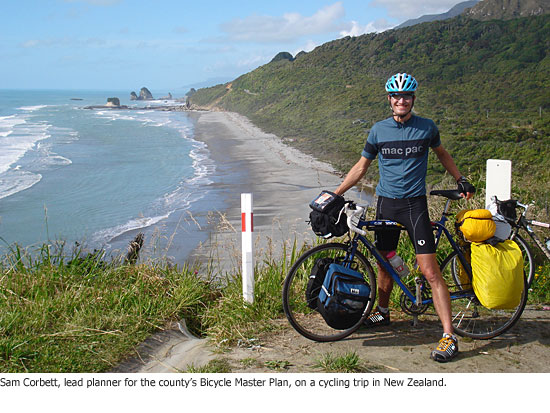 The last time Los Angeles County created a bicycle plan, disco was king, “Jaws” was chewing up the box office and Chevy Chase was channeling Gerald Ford on “Saturday Night Live.”
The last time Los Angeles County created a bicycle plan, disco was king, “Jaws” was chewing up the box office and Chevy Chase was channeling Gerald Ford on “Saturday Night Live.”
Times change, and so has Los Angeles bike culture. Now the county’s jumping into the cycling revolution with both wheels.
A newly drafted Bicycle Master Plan, the county’s first since 1975, puts forth a wide-ranging new blueprint for cycling in Los Angeles County that includes the creation of 695 miles of new bikeways in unincorporated territory over the next two decades, including 20 miles of rider-friendly “bike boulevards.” Nearly 300 miles of the new bikeways would be dedicated bicycle paths and lanes, while the rest would fall under the category of “bicycle route,” in which signage and, potentially, pavement markings, would designate preferred cyclist thoroughfares.
The plan as drafted also contains a range of policy and program recommendations, including support for new “end-of-trip” facilities for cyclists to stow bikes and maybe take a shower; a push for a county “healthy design ordinance”; proposals to make roads safer for cyclists; a recommendation to add bicycles to the county’s transportation fleet; and an endorsement of bicycling as a valid, and growing, transportation option that makes people and communities healthier and more environmentally-friendly.
“It’s a sweeping document in that it provides a vision,” said Abu Yusuf, the county’s bikeway coordinator. “We’re trying to be very proactive.” He said the draft plan is as much about human behavior as it is about infrastructure: “If people aren’t motivated to use the bikeways and to feel safe doing so, they’re not going to use the facilities.”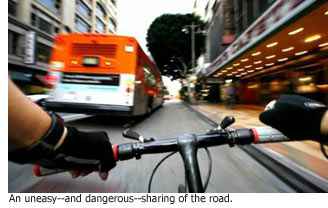
The plan goes out for a final round of public comments later this month. Once those comments are integrated into the document, the plan, if adopted by the Planning Commission and Board of Supervisors, would become part of the county’s General Plan.
The action on the county bike plan comes as Los Angeles rides a huge wave of cycling activism. The city, to great acclaim, recently approved a new bicycle plan that aims to add 1,680 miles of new bikeways. Bicycle advocates have also pushed for greater law enforcement attention to motorists who hit cyclists, for “sharrows” markings to make it clearer that cars need to share the streets with their two-wheeled brethren, and for bike-friendly amenities like a new “bike corral” in Highland Park and “open street” events like CicLAvia.
“The cyclists have come out of the woodwork, so to speak, in the last 18 months and demanded that government do better. And the county is doing better,” said George Wolfberg, a member of the county’s bicycle advisory committee, which helped prepare the draft plan.
Sam Corbett, a senior associate with Alta Planning + Design, which created the bicycle plan draft for the county’s Department of Public Works, said street-level efforts in Los Angeles are part of a larger national picture.
“I’ve found that grassroots activism plays a critical role in pushing the agenda and elevating the importance of bicycling issues in Los Angeles and in other cities throughout the country,” Corbett said. “Without advocates and concerned citizens’ requests for more bicycle-friendly policies, programs and facilities, there’s no question that we wouldn’t have seen as much progress in the past 10-15 years throughout the country in improving bicycling conditions.”
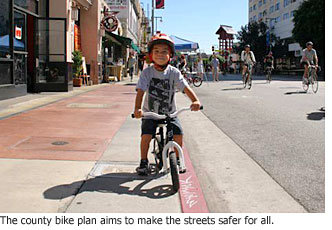 The county plan proposes adding four kinds of bikeways at a cost of $284.8 million over the next 20 years. Those include some 69 miles of “Class 1” car-free bike paths that would be created in unincorporated pockets across the county, with the largest stretches in the San Gabriel and Santa Clarita valleys. There also would be nearly 225 miles of “Class 2” bicycle lanes, with dedicated space for cycling painted onto roadways throughout unincorporated Los Angeles County.
The county plan proposes adding four kinds of bikeways at a cost of $284.8 million over the next 20 years. Those include some 69 miles of “Class 1” car-free bike paths that would be created in unincorporated pockets across the county, with the largest stretches in the San Gabriel and Santa Clarita valleys. There also would be nearly 225 miles of “Class 2” bicycle lanes, with dedicated space for cycling painted onto roadways throughout unincorporated Los Angeles County.
And the plan calls for creation of more than 380 miles of “Class 3” bicycle routes—primarily in the Antelope and Santa Clarita valleys, but also through the Santa Monica Mountains.
“Don’t get too excited about that, unfortunately,” said Tom Foote, a lawyer who regularly commutes from his Topanga home to his office in Santa Monica. Foote, a member of the bicycle advisory committee that consulted on the report, said no one should expect to wake up one day to find a dedicated bike lane running through the mountains; the topography would make it tough, if not impossible, to widen roads sufficiently.
However, the bicycle route designation would mean bicycle signage and possibly shared lane markings in some areas, and would require future planners to consider bicycle needs when they work on roads in the future.
Finally, the report advocates creating 20 miles of “bicycle boulevards” in the San Gabriel Valley and the county’s central, urban core. Such boulevards—with “calming” features such as traffic circles, along with signage and shared lane markings, added to streets that already have low automobile volumes—have proven popular with families and other riders in places like Berkeley, Corbett said.
The plan covers all of unincorporated Los Angeles county, with nearly 2,657 square miles comprising 65% of the county’s total land but home to just 11% of its population. The sheer size poses difficulties for bicycle planners.
“The challenge in a lot of the county is that it’s vast. There’s a huge amount of space,” Corbett said, noting that while trips of 5 miles or less can be enticing to a would-be cyclist, 15- to 20-mile voyages in places like the Antelope Valley can be daunting.
Another obstacle comes from Los Angeles’ entrenched car culture. “Politically and just practically, it can be challenging to put in bikeway facilities,” Corbett said.
To help overcome those challenges, the plan marshals an array of environmental, health and safety information to make the case for thoroughly integrating bicycles onto Los Angeles streets that have long been considered—by some—to be the exclusive domain of automobiles.
Among its findings:
Streets must be made safer for cyclists. There were 1,307 collisions involving bicycles reported in unincorporated county areas from 2004-2009. Many of those—228—took place in East Los Angeles. On the Westside, there were 56 crashes, with the vast majority (37) occurring in Marina del Rey. “Bar none, safety is the No. 1 concern that citizens have with cycling,” Corbett said. Helping people overcome those fears through education and better design puts more cyclists safely on the streets, the report said.
Bicycling is the green transportation choice. By 2035, increased bicycle use is expected to reduce the number of vehicle trips in unincorporated areas by more than 6 million a year, reducing emissions of hydrocarbons, carbon dioxide and other substances linked to climate change and smog.
Cycling is a public health issue. Bicycle-friendly communities contribute to improved public health by encouraging physical activity and helping to combat chronic diseases such as diabetes and heart disease.
Riding is a lot cheaper than driving. The report said cyclists’ annual operating costs run just 1.5% to 3.5% of motorists’ expenses. (An argument that seems likely to get more persuasive as gas prices move north of $4 a gallon.)
In undertaking its first bike master plan in 36 years, the county has to make up for lost time, and lost funding opportunities. The biggest state source of funding for commuter bike facilities requires master plan updates every five years, Corbett said.
The bike master plan puts the county back in the game—lagging behind places like Portland, New York and even Long Beach, but ready to roll. “It’s undoubtedly a big advance over the last master plan, which is ancient and completely outdated,” Foote said.
“This is a major document,” added Yusuf. “It provides a vision for what the county wants to do.”
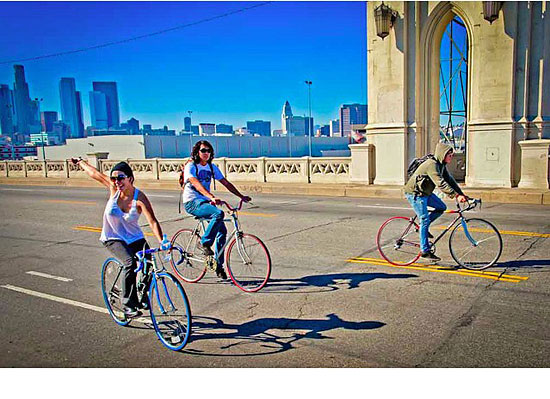 Public workshops on the county’s Bicycle Master Plan begin March 28 at 6 p.m. at the Topanga Elementary School. For a list of meeting times and locations, click here.
Public workshops on the county’s Bicycle Master Plan begin March 28 at 6 p.m. at the Topanga Elementary School. For a list of meeting times and locations, click here.
Posted 3/10/11
Masters of ceremony
March 9, 2011
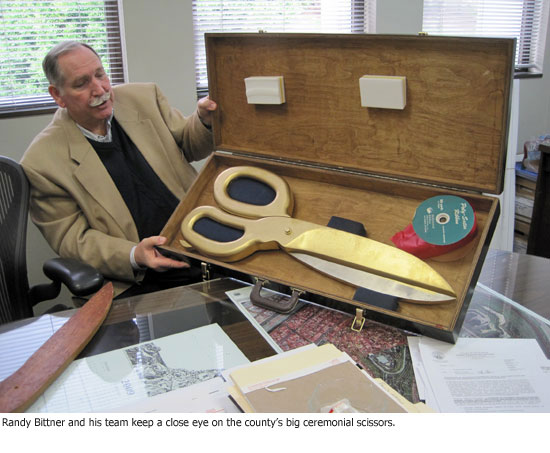 Every time a Los Angeles County dignitary grins into the camera and cuts a big red ribbon, somewhere up there Arthur “Ski” Wisniewski is smiling, too.
Every time a Los Angeles County dignitary grins into the camera and cuts a big red ribbon, somewhere up there Arthur “Ski” Wisniewski is smiling, too.
Back in the early ’80s, Wisniewski, a carpenter and manager in the Internal Services Division, ushered in the county’s modern era of ceremonial snipping when he handcrafted a pair of immense solid wood scissors with sharp metal blades that actually cut.
Of the five original pairs (one for each supervisorial district), only two remain in service. They’re closely guarded implements, ferried to events in custom-crafted cases and quickly packed away once the TV cameras have gone home.
“We have to more or less guard them now,” says Randy Bittner, ISD’s section manager for facilities operations services, who keeps the scissors locked up when they’re not in use. “The guys never take their eyes off them.”
“The guys” are ISD’s special events section—the backstage crew for virtually every public event staged by a county supervisor or department anywhere in L.A. County.
If ceremonial events provide a symbolic narrative of government work in action, these guys are the story’s unsung ghost writers.
They work out of a hangar in East Los Angeles equipped with a carpentry room and well-stocked with folding chairs, tables, lattice backdrops, tents, gold-painted shovels (for groundbreakings) and even a couple of ice machines.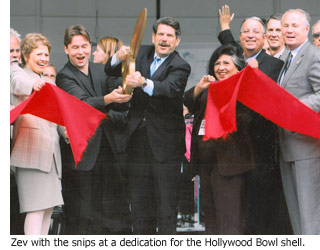
You get the feeling that, given a cake and a deejay, these guys could stage a pretty good wedding reception if they had to. It hasn’t come to that, but they have set up events ranging from hospital wing openings and park gymnasium groundbreakings to postage stamp unveilings and supervisorial trail rides. They created an impromptu “green room” for Seal when he performed at the county’s Rancho Los Amigos National Rehabilitation Center. Their carpentry work ranges from ADA-accessible walkways to those oak podiums featuring the county seal, regularly seen at press conferences on the nightly news.
“We see our programs on television all the time. I tell my wife, ‘I built that,’ ” says Sylvester “Sly” Anthony, the team’s carpenter supervisor.
As for the scissors, the ISD team oversees a dry run before each event to make sure the ceremonial cut takes place without a hitch. (The advice is always the same: Make sure the ribbon is pulled taut.)
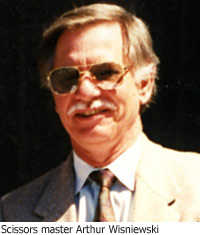 Even though the scissors are as tall as a toddler, they are surprisingly easy to use. Despite being pressed into service at hundreds of events over the years, they’ve held their edge without any special maintenance.
Even though the scissors are as tall as a toddler, they are surprisingly easy to use. Despite being pressed into service at hundreds of events over the years, they’ve held their edge without any special maintenance.
“It’s not like trimming hedges,” Bittner says.
In recent years, they’ve helped to inaugurate projects big and small, including the new County-USC Medical Center, the new emergency room at Olive View-UCLA Medical Center, the Department of Public Social Services’ mobile food stamp sign-up van and a fitness zone at El Cariso Park in Sylmar.
By all accounts, creating the scissors was Wisniewski’s idea.
“I believe he took it upon himself. He just wanted a better, more impressive pair of scissors,” says Paul English, ISD’s division manager of craft operations.
Wisniewski’s decision to equip his creation with a working blade automatically elevated them above the props widely used elsewhere—the ones that look good for the cameras but can’t shear through even the flimsiest ribbon.
“Most of them don’t cut,” English says. “I’ve never seen one with an edge.”
Wisniewski got to see his scissors in plenty of action before he retired in 1997 after 35 years of county service. He died last year, but his scissors remain on active duty—as sharp as ever.
“We like ‘em,” English says. “They’re visually impressive.”
Bowled over in Hollywood—again
February 9, 2011
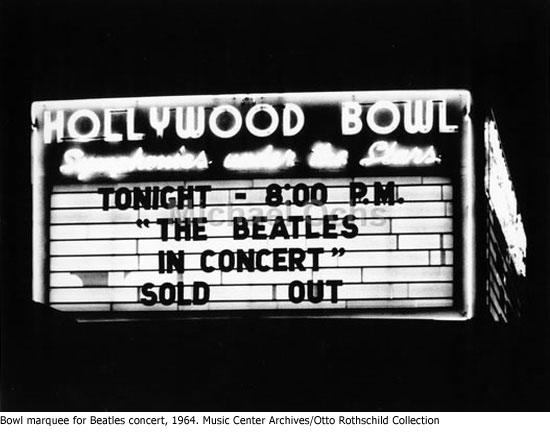
If you were lucky enough to grow up here, you’ve probably got some cherished memories of the Hollywood Bowl. If not, chances are you probably imagined what it would be like to experience just one concert—Sinatra! The Beatles! Hendrix! Heifetz!—under the stars at the storied amphitheater.
That kind of spellbinding magic, reaching across the years and the miles, has just been recognized again in the latest Pollstar awards. For the 7th straight year, concert industry professionals named the Bowl the nation’s “Best Major Outdoor Concert Venue.” The county-owned venue beat finalists that included the Gorge Amphitheatre in Quincy, Washington, and the Mann Center for the Performing Arts in Philadelphia. (Another L.A. institution, the Greek Theater, also was honored this year with the “Red Rocks Award for Small Outdoor Venue.”)
We’ve marked the occasion by taking a spin through some of the Bowl’s historic photos. Whether you’re a homegrown Angeleno or a transplant, we think you’ll find something here to surprise, amuse or just take you back in time. Also, check out the huge collection of archival photos and video snippets on the Bowl’s website that feature Frank Sinatra, The Beatles and an array of other classical and pop music performance greats. And to create some Bowl memories of your own, here’s this season’s concert lineup.
Posted 2/9/11




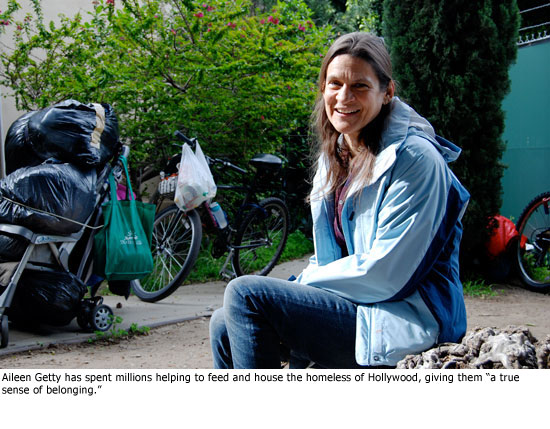
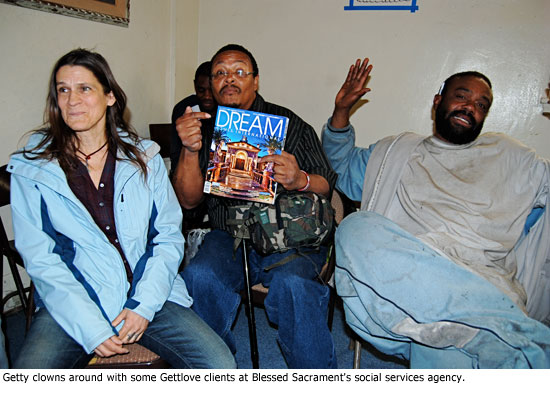
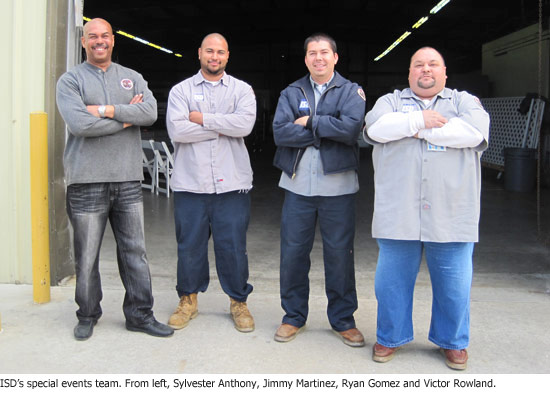






























 Check for the latest closure information
Check for the latest closure information








